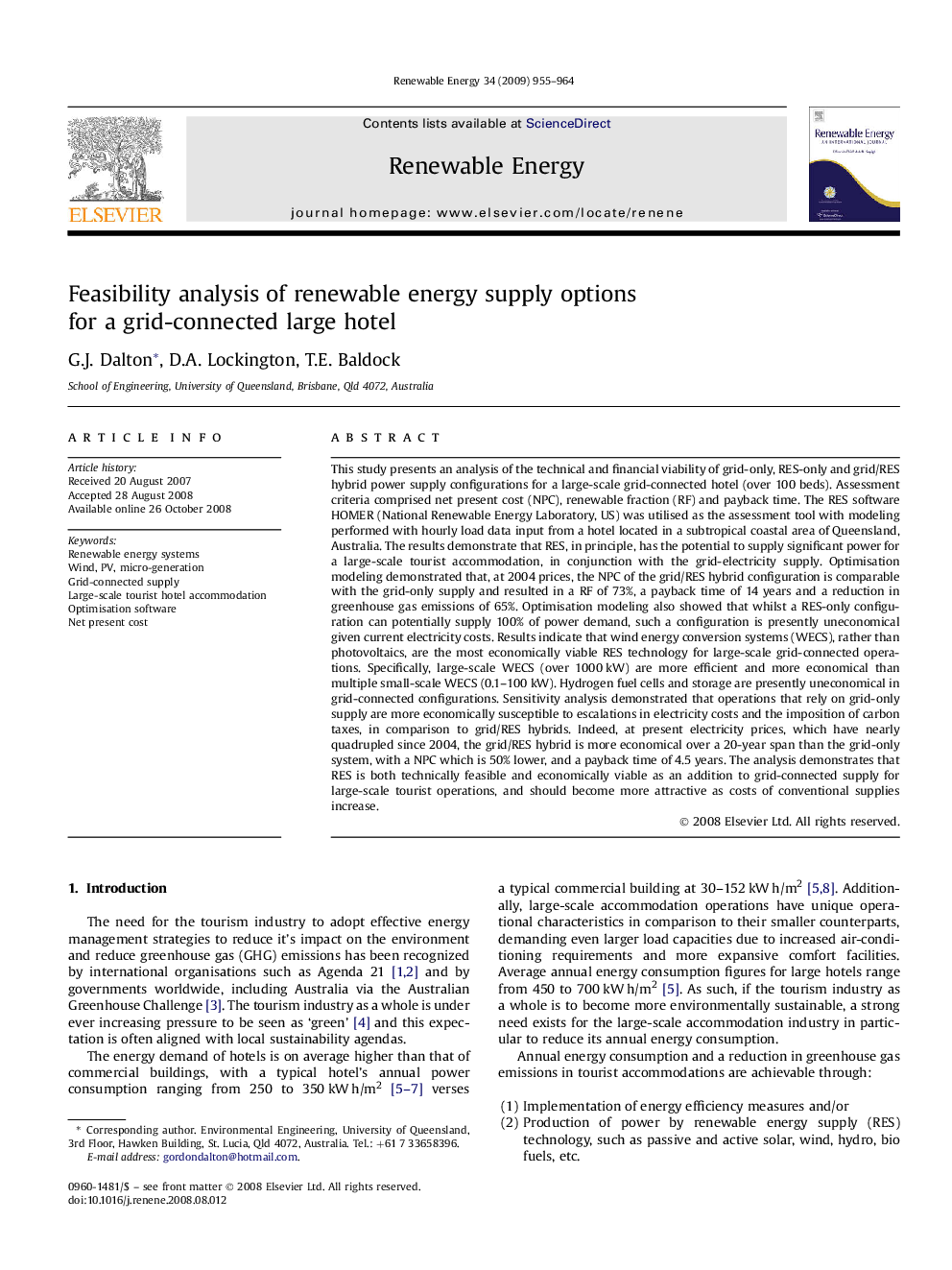| کد مقاله | کد نشریه | سال انتشار | مقاله انگلیسی | نسخه تمام متن |
|---|---|---|---|---|
| 302011 | 512525 | 2009 | 10 صفحه PDF | دانلود رایگان |

This study presents an analysis of the technical and financial viability of grid-only, RES-only and grid/RES hybrid power supply configurations for a large-scale grid-connected hotel (over 100 beds). Assessment criteria comprised net present cost (NPC), renewable fraction (RF) and payback time. The RES software HOMER (National Renewable Energy Laboratory, US) was utilised as the assessment tool with modeling performed with hourly load data input from a hotel located in a subtropical coastal area of Queensland, Australia. The results demonstrate that RES, in principle, has the potential to supply significant power for a large-scale tourist accommodation, in conjunction with the grid-electricity supply. Optimisation modeling demonstrated that, at 2004 prices, the NPC of the grid/RES hybrid configuration is comparable with the grid-only supply and resulted in a RF of 73%, a payback time of 14 years and a reduction in greenhouse gas emissions of 65%. Optimisation modeling also showed that whilst a RES-only configuration can potentially supply 100% of power demand, such a configuration is presently uneconomical given current electricity costs. Results indicate that wind energy conversion systems (WECS), rather than photovoltaics, are the most economically viable RES technology for large-scale grid-connected operations. Specifically, large-scale WECS (over 1000 kW) are more efficient and more economical than multiple small-scale WECS (0.1–100 kW). Hydrogen fuel cells and storage are presently uneconomical in grid-connected configurations. Sensitivity analysis demonstrated that operations that rely on grid-only supply are more economically susceptible to escalations in electricity costs and the imposition of carbon taxes, in comparison to grid/RES hybrids. Indeed, at present electricity prices, which have nearly quadrupled since 2004, the grid/RES hybrid is more economical over a 20-year span than the grid-only system, with a NPC which is 50% lower, and a payback time of 4.5 years. The analysis demonstrates that RES is both technically feasible and economically viable as an addition to grid-connected supply for large-scale tourist operations, and should become more attractive as costs of conventional supplies increase.
Journal: Renewable Energy - Volume 34, Issue 4, April 2009, Pages 955–964